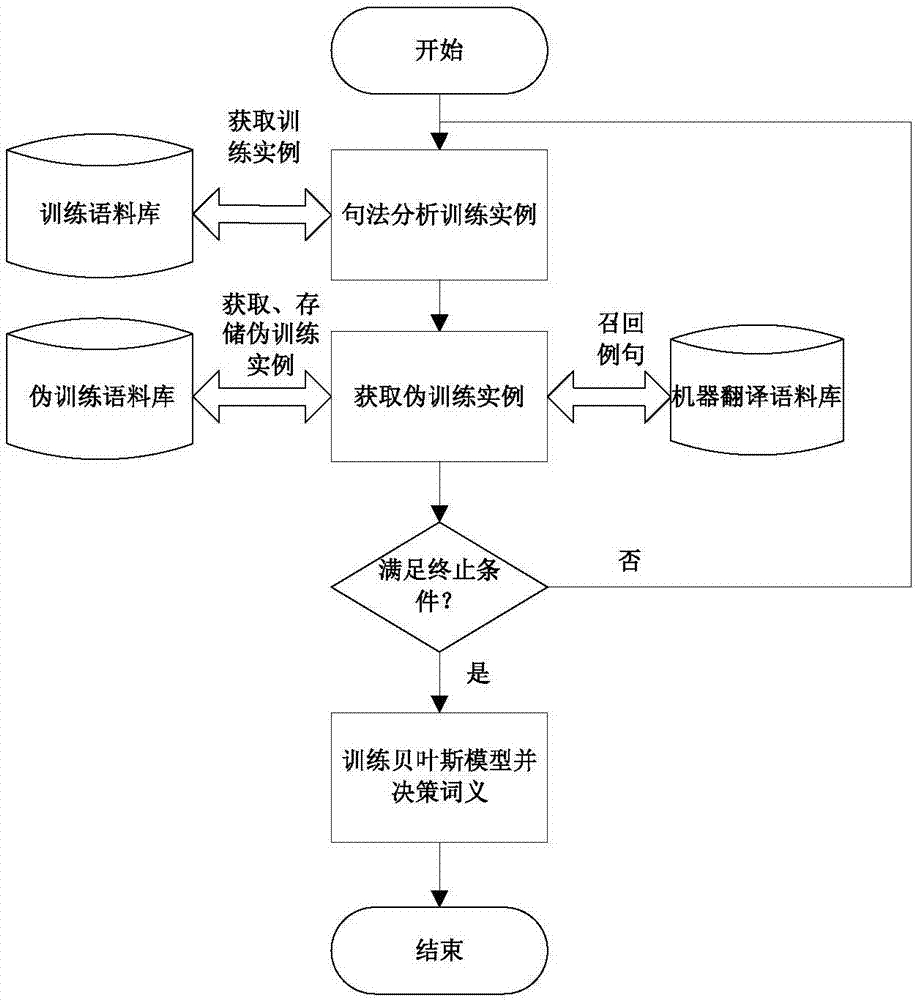Bayesian word sense disambiguation method based on mass pseudo-data
A word sense disambiguation and pseudo-data technology, applied in the field of natural language processing, can solve the problems of time-consuming and labor-intensive disambiguation knowledge, poor disambiguation effect, etc., and achieve the effect of alleviating the problem of data sparseness, improving accuracy and broad development prospects.
- Summary
- Abstract
- Description
- Claims
- Application Information
AI Technical Summary
Problems solved by technology
Method used
Image
Examples
Embodiment Construction
[0027] The specific implementation scheme of the present invention will be given below in combination with examples. "Project One unit One-time ignition success" is the training corpus, and the sentence "wind power unit System Analysis Key Technology Research" is the test corpus, and the ambiguity word "unit" in the test corpus is disambiguated. The meaning of the unit is "machine" and "personnel".
[0028] A kind of Bayesian word sense disambiguation method based on a large amount of dummy data of the present invention, comprises the following steps:
[0029] Step 1. Use a dependency parser to analyze the training examples, and collect tuples that have a dependency relationship with the target ambiguous word. The specific operations are as follows:
[0030] Syntactically analyze the instance, such as figure 2 shown. Get the dependency tuples (number, unit) and (unit, ignition). Take the second tuple (unit, ignition) as an example to illustrate the working principle of...
PUM
 Login to View More
Login to View More Abstract
Description
Claims
Application Information
 Login to View More
Login to View More - R&D
- Intellectual Property
- Life Sciences
- Materials
- Tech Scout
- Unparalleled Data Quality
- Higher Quality Content
- 60% Fewer Hallucinations
Browse by: Latest US Patents, China's latest patents, Technical Efficacy Thesaurus, Application Domain, Technology Topic, Popular Technical Reports.
© 2025 PatSnap. All rights reserved.Legal|Privacy policy|Modern Slavery Act Transparency Statement|Sitemap|About US| Contact US: help@patsnap.com



